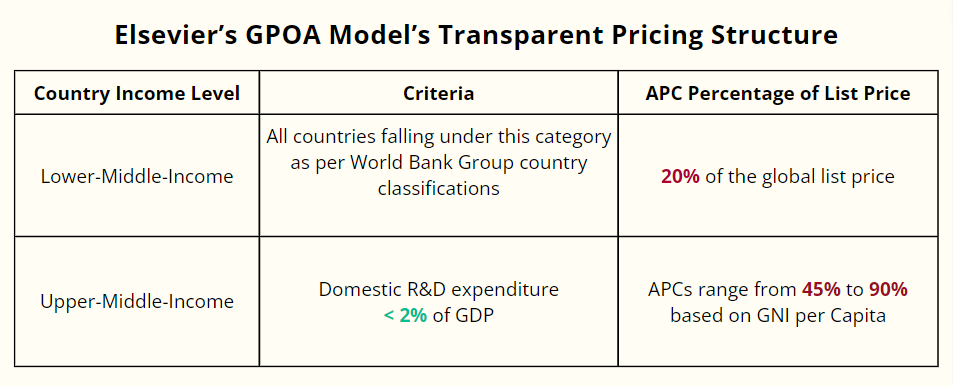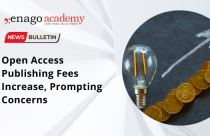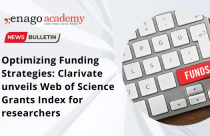Publishers Reimagining Open Access Funding and Publishing: APCs finally being replaced with innovative models

Recent years have seen a dynamic transformation in the academic publishing landscape, driven by the increasing demand for open access (OA) research articles. As OA publishing continues to allow the widespread dissemination of scholarly work, making it accessible to a global audience, this shift has led publishers to introducing various funding models, including Article Processing Charges (APCs). To understand the perceived impact of APCs by the scholarly community, we conducted a comprehensive global study. Our findings showed that although an impressive 82% of researchers express a preference for publishing all their scholarly content as OA, a significant 79% refrain from doing so due to the substantial costs associated with APCs!
In response to these evident challenges, publishers like the American Chemical Society (ACS) with its Article Development Charges (ADC) and Elsevier with its Geographical Pricing for Open Access (GPOA) have taken measures to empower authors by introducing new approaches. These approaches have been under scrutiny and raised speculations about their impact on OA publishing. One pressing question remains — “Are these changes simply a replacement of APCs with fancier terms, or are they innovations that actually benefit authors and researchers?”
Before drawing any conjectures, let’s understand both the approaches as explained by the publishers themselves and decode what it means for the scholarly community.
ACS’s Plan to Empower Authors in OA Publishing
When the Publications Division of the American Chemical Society (ACS) made an announcement regarding an innovative approach to OA publishing in its hybrid ACS journals in September 2023, it centred around the introduction of the Article Development Charge (ADC), aimed at providing authors with an alternative pathway to fulfil funder requirements for zero-embargo green OA.

This move is part of ACS’s commitment to supporting authors while ensuring the integrity and quality of their research. To further understand this approach, we checked with the ACS team and they helped us decode ADC point-by-point.
Understanding the ADC
The ADC covers all costs related to publishing services from the initial submission of a manuscript to the final editorial decision. These services encompass editorial and review activities, data verification, fraud detection, author support, community development, and maintaining secure systems. This approach represents a significant financial investment by ACS to maintain the rigorous peer-review process and overall quality of scholarly publications.
Unlike a traditional submission charge, the ADC does not impact author rights in any way. Authors choosing this option can immediately post their accepted manuscript with a CC BY license in a repository, allowing others to freely distribute, remix, adapt, and build upon their work, including for commercial purposes.
Why the ADC Matters?
According to ACS, one of the primary motivations behind introducing the ADC is to cater to authors who are required to make their accepted manuscripts available immediately upon acceptance under a CC BY license. ACS Publications acknowledges that many authors already have access to publishing pathways through institutional read and publish agreements or other funding sources. Still, this new option provides an essential avenue for those who require immediate OA.
Additionally, the introduction of zero-embargo green OA publishing can impact journal subscription rates. ACS journals calculate subscription rates based on the usage of published articles, and usage of openly accessible articles is specifically excluded from this calculation. When authors post editorially accepted manuscripts in OA repositories, it reduces the usage of the Version of Record on the ACS platform, thus influencing the subscription calculations. ACS Publications emphasizes that there will be no double charging for the same services.
Equitable Access and Differences with Other OA Models
To ensure equitable access to this new OA option, ACS Publications is committed to providing waivers and discounts for researchers from countries that currently receive special pricing for article processing charges (APCs). This approach underscores the organization’s dedication to making OA publishing accessible to authors across the globe.
It’s important to distinguish between zero-embargo green OA and gold OA. Gold OA involves making the final published article, known as the Version of Record, immediately available online upon payment of an APC. In contrast, zero-embargo green OA involves posting the accepted manuscript in a repository upon acceptance for publication, with the Version of Record available through journal subscription.
So, How Is ADC Different From APC?

This fee includes the costs associated with various publishing services, starting from submission and ending with the final editorial decision. These services encompass organizing and maintaining a high-quality peer review process, among other services, all managed by a global network of editors and reviewers. These costs are substantial, representing over 50% of the total expenses for publishing the final authoritative version of an article.
However, it’s important to note that the ADC doesn’t cover the expenses related to the final production, digital distribution, discovery, and hosting of the Version of Record, nor does it include post-publication updates. If authors who paid the ADC later choose to publish their work as fully OA, the ADC amount will be subtracted from the gold OA APC, ensuring that authors are not charged twice for the same services. For authors, this means they can opt for a less expensive OA publishing route, though it may come with a 12-month embargo on sharing their work if they cannot pay the ADC. Additionally, waivers or discounts for the ADC will be automatically applied to papers from corresponding authors in countries that receive special pricing for APCs.
This innovative approach offers a more flexible solution for authors, especially those who do not have access to funding to cover traditional APCs. It ensures the long-term quality and integrity of the research published in ACS journals while respecting funder mandates.
Now, let’s move to the development recently announced by Elsevier.
Democratizing Access to Research with Elsevier’s New Approach: The Geographical Pricing for Open Access (GPOA) Model
In another exciting move to address the inequities in scientific publishing, Elsevier introduced a ground-breaking pilot program known as Geographical Pricing for Open Access (GPOA). The initiative is set to revolutionize the world of academic publishing by making OA APCs more affordable for authors in low- and middle-income countries. This unique and ambitious approach is poised to come into effect from January 2024 and is expected to reshape the landscape of scholarly publishing.
Tailoring Pricing to Economic Realities
The GPOA model is the first of its kind in the publishing industry and is designed to bridge the gap between regions with varying economic conditions. Elsevier’s decision to structure article publishing charges based on countries’ local economic conditions and average income represents a giant leap towards democratizing access to research. By adopting a pricing structure linked to Gross National Income (GNI) per capita, a widely accepted indicator, Elsevier aims to eliminate the financial barriers that have historically impeded researchers and institutions in low and middle-income countries from publishing in Gold OA journals. This approach aligns with international organizations like Research4Life and is expected to foster inclusivity in the academic world.
Empowering Authors and Institutions with a Transparent Pricing Structure
The pilot program includes 142 Gold OA journals, and its pricing structure is defined by the income level of the corresponding author’s country. This structure categorizes countries into four groups: low-income, lower-middle-income, upper-middle-income, and upper-middle-income subgroups. Authors from low-income countries, as classified by the World Bank as of July 2023, will have their APCs waived entirely.

This pricing model is designed to make publishing more accessible to authors and institutions while also accounting for the unique economic conditions and challenges faced by different countries. By setting clear and transparent pricing structures, Elsevier aims to foster a more equitable system that supports OA publishing while considering the financial constraints in each region. This not only helps authors but also empowers institutions and encourages collaboration across borders.
Stuart Whayman, Managing Director, Researchers and Librarians at Elsevier, acknowledged the economic disparities as one of the barriers to achieving a more inclusive world of research. He stated that the GPOA initiative is a step toward creating a globally equitable model that reflects local economic circumstances, enabling researchers in low and middle-income countries to contribute to scientific advancement. It is a testament to Elsevier’s commitment to advancing openness and inclusion in research while pricing journal article publishing charges below market averages.
Toward a More Inclusive Academic Publishing Ecosystem
Elsevier has also taken a broader approach to inclusivity by launching its Inclusion & Diversity Advisory Board in 2020. This initiative aims to improve gender, race, ethnicity, and geographic representation across its organization and the wider academic community, further demonstrating its commitment to a more diverse and equitable scholarly landscape.
The GPOA pilot program is a significant step forward in the journey toward a more inclusive and accessible academic publishing ecosystem. By adjusting APCs to align with local economic conditions and income levels, Elsevier is actively addressing the long-standing issue of accessibility and affordability in academic publishing. The success of this program will likely encourage other publishers to explore similar initiatives, ultimately promoting a more equitable and inclusive global research community. In this increasingly interconnected world, fostering equal access to knowledge and research is not just a moral imperative but a vital step towards global scientific progress and innovation.
The New Approaches Reflect a Changing Landscape of OA Publishing
While some may view these changes as a simple rebranding of APCs, they do represent a positive step toward more equitable access to scholarly publications. ACS’s ADC and Elsevier’s GPOA model both demonstrate a commitment to empowering authors and institutions while ensuring the integrity and quality of research. The ADC offers flexibility to authors who lack funding for traditional APCs, bridging the gap between immediate OA and financial constraints. Meanwhile, the GPOA model takes a monumental step toward democratizing access to research by tailoring pricing to economic realities, making OA publishing more affordable for authors in low- and middle-income countries.
The world of OA publishing is evolving, and these innovative approaches have the potential to redefine how we think about funding OA. While it is essential to remain vigilant and ensure that these new models genuinely benefit the global research community, they indicate that publishers are actively working to adapt to the shifting demands of the scholarly community and make quality research more accessible to all. In the end, the success of these models will be determined by their ability to achieve a fair, transparent, and globally equitable pricing structure for scholarly publishing.









